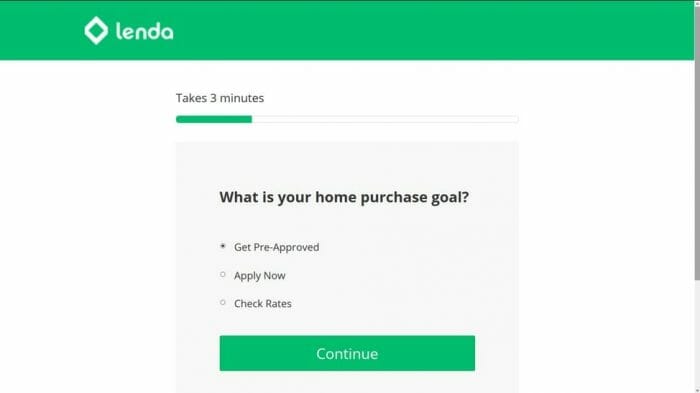Beginning in January 2014, the Consumer Financial Security Bureau, or CFPB, issued new pointers to protect mortgage debtors. The foundations deal primarily with what is known as the “servicing” facet of the mortgage course of. That’s all of the issues that happens after a mortgage closes, from establishing escrows and crediting funds to foreclosures.
There are 9 pointers in all. Their goal is to “current house owners and buyers buying for a home mortgage with new rights and better security from harmful practices.” Let’s see what each one is about.
In This Article:
- 1. Periodic Billing Statements
- 2. Curiosity Cost Adjustment Notices for ARMS
- 3. Payment Crediting and Payoff Statements
- 4. Strain-place Insurance coverage protection
- 5. Error Choice and Knowledge Requests
- 6. Frequent Servicing Insurance coverage insurance policies, Procedures and Requirements
- 7. Early Intervention With Delinquent Debtors
- 8. Continuity of Contact with Delinquent Debtors
- 9. Loss Mitigation Procedures
1. Periodic Billing Statements
Mortgage lenders ought to current periodic statements to debtors for each billing cycle. These ought to copy knowledge on funds presently due and beforehand made, fees imposed, transaction train, utility of earlier funds, contact knowledge for the servicer and housing counselors , and, the place related, knowledge regarding delinquencies.
The periodic assertion would not apply to fixed-rate mortgages, as long as the the servicer provides a coupon e-book. Moreover, the coupon e-book ought to comprise positive knowledge as specified throughout the rule and that knowledge must be made obtainable to the patron.
2. Curiosity Cost Adjustment Notices for ARMS
If a mortgage is an adjustable charge mortgage (ARM), it accommodates provisions for periodic modifications throughout the price of curiosity. If in case you’ve such a mortgage, the lender ought to offer you written uncover of a charge change between 210 and 240 days sooner than the preliminary change is able to occur. They’re then required to produce uncover of subsequent charge and price modifications, between 60 and 120 days prematurely of the change. The uncover ought to embody an estimate of every the model new charge and the model new price.
3. Payment Crediting and Payoff Statements
Lenders ought to credit score rating mortgage funds from debtors as of the day of receipt. Nonetheless, if a value is acquired for decrease than the entire amount, the fee may be held in a suspense account. When the amount throughout the suspense account covers a periodic price, the servicer ought to apply the funds to the patron’s account.
The lender can be required to ship an appropriate payoff stability to a consumer when requested. They have no later than seven enterprise days from receipt of a borrower’s written request to produce that knowledge.
4. Strain-place Insurance coverage protection
So far, lenders engaged in a apply commonly known as force-place insurance coverage protection. That was a apply whereby the lender would get a home proprietor’s insurance coverage protection protection on the property securing the mortgage, if it believed that the debtors had allowed their protection to lapse. This sometimes resulted in high-priced insurance coverage insurance policies, which had been then charged to the borrower.
Under the model new pointers, lenders are prohibited from charging a borrower for force-place insurance coverage protection till the lender has set off to think about the borrower has did not sustain insurance coverage protection. They must moreover current the debtors with required notices.
The lender ought to current the borrower with written uncover of the force-place protection a minimal of 45 days sooner than charging the borrower for the safety. They must moreover current a second uncover a minimal of 30 days after the first, and a minimal of 15 days sooner than charging the borrower for the safety.
If the borrower provides proof {{that a}} home-owner’s insurance coverage protection protection exists, the lender ought to cancel the force-place protection. They must moreover refund any premiums paid on the protection all through overlapping intervals of safety. In addition to, the worth of the force-place protection must be reasonably priced for the amount of safety in energy.
If there’s an escrow account linked to the mortgage which contains the price of home-owner’s insurance coverage protection premiums, the lender is prohibited from buying force-place insurance coverage protection. If the servicer can proceed the borrower’s home-owner insurance coverage protection, even when they need to advance funds to the borrower’s escrow account to take motion, they should go that route.
5. Error Choice and Knowledge Requests
Lenders are literally required to answer to written requests for knowledge, along with complaints of errors. The lender ought to regulate to error determination procedures for errors which could be spelled out throughout the new pointers. This accommodates any errors which could be the outcomes of the servicing of the mortgage.
Lenders are required to acknowledge receipt of the borrower’s written notification inside 5 days of receipt. Lenders then have 30 to 45 days to answer to the borrower’s request. Inside that time, they should each applicable the error claimed by the borrower, or conduct an investigation to search out out that no error exists. If the latter occurs, they should then inform the borrower in writing.
If knowledge requested by the borrower is not obtainable, the lender ought to notify the borrower in writing. This uncover ought to embody an proof as to why the information is not obtainable.
6. Frequent Servicing Insurance coverage insurance policies, Procedures and Requirements
Lenders are required to determine insurance coverage insurance policies and procedures which could be designed to regulate to the model new pointers. Which means they should spell out how they’re going to accomplish the subsequent:
- Accessing and providing appropriate and properly timed knowledge to debtors, merchants, and courts
- Appropriately evaluating loss mitigation functions in accordance with the eligibility pointers established by merchants
- Facilitating oversight of, and compliance by, lenders
- Facilitating swap of information all through servicing transfers
- Informing debtors of the provision of written error determination and knowledge request procedures
Each lender ought to moreover hold positive paperwork and knowledge for each mortgage mortgage. This must be completed in a strategy that enables them to compile it proper right into a servicing file inside 5 days.
7. Early Intervention With Delinquent Debtors
Lenders are required to intervene throughout the event {{that a}} borrower may be heading for default. The lender ought to make “good faith efforts” to determine dwell contact with debtors by the thirty sixth day of their delinquency. They’re required to promptly inform debtors that loss mitigation decisions may be obtainable. The lender ought to moreover current the borrower written uncover with particulars about loss mitigation decisions by the forty fifth day of a borrower’s delinquency.
8. Continuity of Contact with Delinquent Debtors
Lenders are literally required to make early contact with debtors who’re vulnerable to default. That contact ought to even be on a unbroken basis. As quickly as as soon as extra, the lender must be completely prepared to assist the delinquent borrower with loss mitigation decisions the place they’re obtainable.
The lender ought to make reasonably priced efforts to guarantee that personnel are assigned to a delinquent borrower by the purpose written uncover of early intervention is required. This can be no later than 45 days after a borrower’s delinquency.
In addition to, the assigned personnel must be accessible to the debtors by cellphone to assist with loss mitigation decisions. This accommodates advising the borrower on the standing of a loss mitigation utility, along with anticipated timelines. These personnel are moreover anticipated to have entry to all the knowledge surrounding the borrower’s state of affairs. This knowledge could also be shared with completely different personnel who’re accountable for evaluating the loss mitigation decisions obtainable to the debtors.
9. Loss Mitigation Procedures
This rule will get to the center of the attempt by the CFPB to produce the debtors with additional decisions and protections throughout the event of foreclosures. The debtors must be given every different to stay away from foreclosures by loss mitigation.
The lender ought to adjust to specific loss mitigation procedures. As an example, the lender is required to acknowledge the receipt of a loss mitigation utility in writing, inside 5 days of receipt. They must moreover inform the borrower whether or not or not or not the making use of is full. The borrower must be apprised of any missing knowledge.
If the completed loss mitigation utility is acquired larger than 37 days sooner than a foreclosures sale, the lender is required to guage mitigation decisions inside 30 days. This could embody decisions that will permit the debtors to retain their dwelling. It ought to moreover embody non-retention decisions, comparable to a quick sale.
The lender is required to produce the debtors with written notification of the selection in regard to loss mitigation. This accommodates the reasons for denying the making use of. The borrower ought to moreover be succesful to enchantment the denial, beneath the provision that all the loss mitigation utility is acquired a minimal of 90 days sooner than the scheduled foreclosures sale.
This rule moreover prevents what is known as twin monitoring. That’s a apply whereby the lender is concurrently evaluating a borrower for mortgage modifications or completely different mitigation decisions, on the an identical time that it is on the brink of foreclose on the borrower’s property. The rule prohibits the lender from making the first uncover or from submitting requirements for the foreclosures course of until the mortgage account is bigger than 120 days overdue.
Nonetheless even when a borrower is bigger than 120 days late, the lender won’t begin foreclosures proceedings if the borrower has submitted a completed loss mitigation utility sooner than the foreclosures course of has begun. This rule applies till any of the subsequent takes place:
- The lender notifies the borrower that they are not eligible for any loss mitigation risk. Moreover, all appeals have been exhausted
- A borrower rejects all loss mitigation affords
- A borrower fails to regulate to the phrases of a loss mitigation risk, comparable to a trial modification
Nonetheless, if the debtors submits a completed loss mitigation utility after the foreclosures course of has begun, nonetheless larger than 37 days sooner than a foreclosures sale, the lender won’t switch for a foreclosures judgment or order of sale, or conduct a foreclosures sale, until considered one of many three conditions above has been met.
Principally, the CFPB Mortgage Security Pointers are designed to boost the working relationship between debtors and their mortgage lenders. And it is in the long run hoped that the foundations will make the foreclosures course of every a lot much less likely and fewer painful.
(Sources: What mortgage servicing pointers apply to me?, What the model new CFPB mortgage pointers suggest for households and house owners, and Summary of the final word mortgage servicing pointers)
,







About
For most people, navigating words like financial loans can be challenging. There are so many temptations out there that it can be hard to live a financially balanced life. Our focus is on helping you discover your path to financial success.